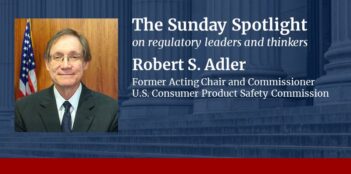
A recent study shows a correlation between regulation and consumer prices.
The federal regulatory burden on businesses has increased by 28 percent in the last 15 years, according to a recent study released by the Mercatus Center at George Mason University. The regulation of certain industries has grown even more: according to the study, direct regulations on electricity increased over 30 percent, and regulations on drugs and medical supplies grew almost 90 percent.
Although regulations can produce significant social benefits, the study’s authors, Professor Dustin Chambers of Salisbury University and Courtney Collins of Rhodes College, emphasized that regulations can sometimes impose hidden costs by changing the behavior of the businesses they are intended to regulate. One common unintended consequence, according to Chambers and Collins, is to cause businesses to raise consumer prices.
Their study found that, on average, every 10 percent increase in regulatory restrictions produces a 0.687 percent increase in consumer prices. The correlation between regulations and prices was statistically significant across numerous industries. Chambers and Collins argued that this correlation shows that businesses tend to pass along the burden of complying with additional regulation onto consumers in the form of higher prices.
The study also found that the burden of higher prices disproportionately affects low-income households. In particular, a consumer expenditure survey revealed that households below the poverty line spend a much greater proportion of their income on highly regulated products, including transportation, electricity, and health care.
In the time period from 2000-2012, the lowest-income households spent 12% more of their income on the most heavily regulated items. In certain sectors, the discrepancy between low and high-income households was greater. For instance, low-income households spent 85% more of their total expenditures on electricity, 80% more on drugs and medical supplies, and over twice as much of their income on tobacco products.
Chambers and Collins acknowledged that while regulators probably do not intend to increase prices for the poorest consumers, it is not uncommon for regulations to have such unintended consequences.
For example, they pointed to the Clean Air Act, which was intended to reduce air pollution by regulating major polluting plants. Instead, they say the Act altered the incentives of businesses by inducing them to build smaller plants in more remote areas, which may have undermined the intended goal of achieving the most efficient level of energy use.
They also referred to economist Sam Peltzman’s argument that a regulation mandating seatbelts to increase automobile safety actually undermined itself by increasing drivers’ perception of safety, causing them to drive more recklessly in response.
In a more recent instance, the U.S. Environmental Protection Agency (EPA) implemented a policy to increase ethanol content in gasoline as a solution in order to reduce global warming. However, Chambers and Collins said the regulation unexpectedly raised corn prices around the world as farmers rushed to produce corn for fuel, placing a food staple out of reach for many poor families.
Drawing attention to unintended consequences like these, Chambers and Collins argue that the study’s findings support the notion that agencies overregulate. They argue that if agencies actually wanted to improve the welfare of the lowest-income citizens, agencies should “cut the regulatory burden faced U.S. firms.” That way, companies would be less inclined to shift the burden of complying with regulations onto consumers.
On the other hand, other researchers have argued that regulations are not necessarily the problem. For example, Nobel Prize-winning economist Joseph Stiglitz argues that economic inequality is actually due to not having enough regulation, and that the current regulatory system is not doing enough to change businesses’ incentive structures.
Others have argued that regulatory failures frequently stem from poor execution of regulations, so that the government could minimize unintended consequences of regulations by taking certain precautions. For example, Sherzod Abdukadirov, another researcher at the Mercatus Center, advances the view that negative consequences from regulations are “by no means unforeseeable.”
Abdukadirov argues that agencies can minimize unintended consequences of regulations by conducting a more rigorous analysis of a rule’s expected impacts before adopting the rule.
He also suggests that agencies can make a conscious effort to reduce “tunnel vision,” which occurs when agencies carry a “single-minded pursuit of a goal too far.” By being aware of potential outside consequences beyond the scope of the agency’s mission, agencies can better anticipate a regulation’s consequences.
In addition, Abdukadirov suggests that agencies could conduct retrospective analyses of prior regulations, which will allow agencies to better evaluate whether regulations are achieving their intended goals.
By highlighting the potential unexpected consequences of regulations, including higher consumer prices, the study by Chambers and Collins alerts regulators to consider such alternative measures when implementing new regulation.



